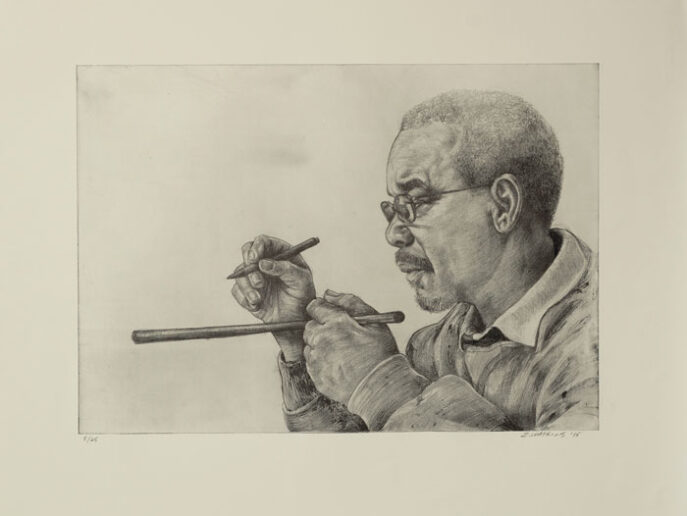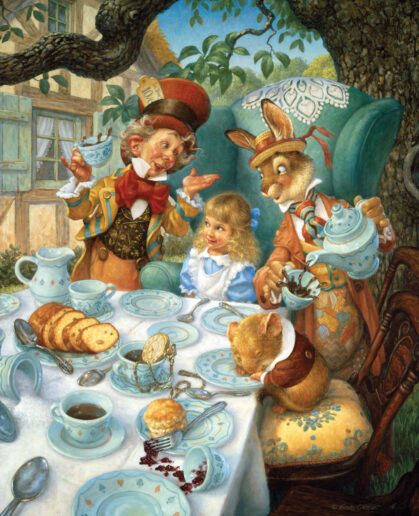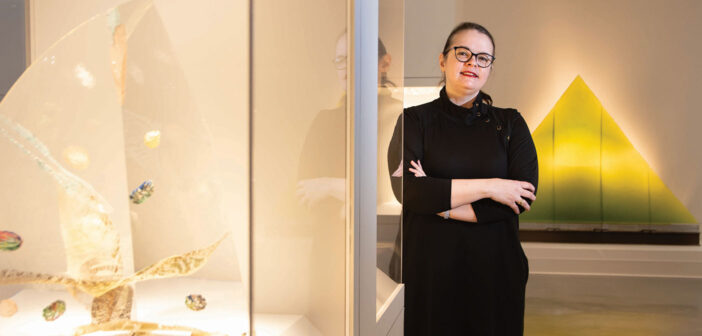Established in 1928, the Flint Institute of Arts (FIA) is the second largest art museum in Michigan and the third largest museum art school in the nation. It boasts an impressive collection of nearly 9,000 items in a variety of genres from locations and artists spanning the globe. With a mission to advance the understanding and appreciation of art for all through collections, exhibitions and many educational programs, the FIA serves more than 160,000 people per year by making art, film and education easily accessible for anyone with the desire and appreciation of art in all its forms.
Tracee Glab joined the FIA in 2009 as assistant curator after working for ten years at the Detroit Institute of Arts in multiple roles. Today, she is the FIA’s Curator of Collections and Exhibitions overseeing the vast FIA collection and organizing current and future exhibitions. Glab graciously agreed to speak with MCM about her role at the Institute and what we can expect in the upcoming year.

Photograph from the upcoming “Sons: Seeing the Modern African American Male”

The Draw by Ed Watkins from the upcoming exhibition “Drawing from Life: Ed Watkins”

A Mad Tea Party-Alice in Wonderland by Scott Gustafson from the upcoming exhibition “Enchanted: History of Fantasy Illustration”
MCM: Good afternoon, Tracee. We appreciate you taking the time to speak with us.
TG: You’re very welcome! I love that you want to talk to me about the FIA. It’s my pleasure.
MCM: You came to the FIA from the Detroit Institute of Arts. How did you make that choice? Had you visited the FIA before your decision?
TG: Yes, I did! I was in Flint for an exhibition well before applying for the assistant curator position. I was at the DIA for ten years as a research assistant and publications editor, but I really wanted to one day be a curator. When the job opened for an assistant at the FIA in 2009, I applied and was hired. My first big responsibility was taking care of the Bray Gallery and our one-of-a-kind French tapestries. The Bray Gallery is one of the things that is special about the FIA. Soon after, I became the Curator of Collections and Exhibitions, overseeing the complete collection.
MCM: I suspect that many of our readers (myself included) are not really sure what the job of a curator entails. So, may I ask: what is a curator?
TG: (Laughs) Good question! To start, let me go back in history a bit. The word “curator” comes from the latin word “cura” meaning “to care for.” In the past, it referred to someone who takes care of objects in a museum and is knowledgeable about those objects and their history. That remains true today, but the position has expanded to include programming and community aspects. Today, curators must reach out to the community and people they serve while continuing to expand what the museum has to offer in an attempt to tell a more complete story of art. At the FIA, I am responsible for the nearly 9,000 items in our possession, 95% of which lie in storage, awaiting their next exhibition. We are currently attempting to make all of our catalog accessible via print, or at flintarts.org. Another part of the job is to identify gaps or missing pieces in the collection. I have a long wish list of artists, subjects and styles I would love to get my hands on! Sometimes, things on the list do come up for purchase, but are far too expensive.
MCM: The FIA has so much of its collection in storage. How are the pieces made available to the public?
TG: We rotate our collection regularly to provide a fresh look in the galleries and we display much of our collections in exhibitions. For example, our current “Steeped in Tradition” exhibition is made up of objects that have been in storage for some time. It features contemporary teaware that has been donated to us over the years, now ready for display along with newly acquired items.
MCM: You mentioned newly acquired items. What is that process like? How do you choose?
TG: Since it began in 1928, the FIA has relied upon items donated by the community. I would say that 93% of our collection came to us via donation. When an item is offered (or we find something we would like to acquire), we have to review it. We determine the item’s condition and determine whether it fits somehow with our current collections. We don’t want to obtain an item to never display it – that isn’t serving our public. If it fits, I recommend the item to our Collection Committee which is made up of members of our board and at-large community members. If they like the item, they recommend it to our Board of Trustees who make the final decision. If they like the item, it becomes part of our collection.
MCM: And exhibitions?
TG: Exhibitions are about 70% of what I do! Approval follows the same process as adding something to a collection. In exhibitions, we are looking for artists and objects that compliment our current collection. With exhibitions, we like to bring things out of storage that haven’t been seen in awhile, as well as attract our current and a new audience. The final hurdle is that it has to be within our budget. Exhibitions are planned several years out and we don’t want to saddle our future leadership with a deficit. We love to bring world art to Flint through our exhibitions and we have already planned them through 2025.
MCM: Tell us a little about your current exhibitions and what you have planned for 2022.
TG: Certainly! We have two exhibitions that will be ending the first week of January and they couldn’t be more different. “The Brush with Reality: Yigal Ozeri” exhibit is amazing. We carry one of his paintings in our regular collection; but to see them all together is really something. The paintings are so realistic, you would think they were photographs. The other, “Time” by Neha Vedpathak is equally phenomenal, but in a different way. She uses a push-pin to separate fibers of Japanese paper and then dyes her designs. It’s entitled “Time” because it was done during the pandemic when all everyone had was time.
MCM: Wait a minute, you said that she uses paper to make her art. I thought the picture online was fabric.
TG: Isn’t it amazing? Pictures don’t do it justice. It looks three-dimensional when it’s on display. Both of the exhibitions I just referenced will be leaving in January and once they are gone, they’re gone. Next year, we have exhibitions featuring the life drawings of Flint native Ed Watkins, a photography exhibition entitled “Sons: Seeing the Modern African American Male” featuring photographs of the men in our community, and “Enchanted: History of Fantasy Illustration.” The latter will feature art from “Game of Thrones,” “Dungeons & Dragons” and the like. All of these are listed on our website with the exception of a contemporary art exhibition coming to us from a museum in Miami. It will be cutting-edge contemporary art with some controversial subject matter. It will definitely make you think.
MCM: So, out of all of the art in the FIA collection, what is your favorite piece?
TG: Without question, it is the painting “Garden Study of the Vickers Children” by John Singer Sargent. It is so calming and beautiful. It fills me with joy! In fact, on December 14, I will be speaking about it during our Coffee with a Curator program, for any who are interested.
MCM: That concludes our conversation. Thank you again for speaking to us and to our readers.
TG: Thanks! It was fun speaking to you about our wonderful collections at the FIA.
Be sure to visit the FIA and make sure not to miss any of the ongoing and upcoming exhibitions. Admission is FREE any day of the week for Genesee County residents and Saturdays are free for all visitors, courtesy of Huntington Bank. For more information, visit flintarts.org.
Photograph from the upcoming “Sons: Seeing the Modern African American Male”
A Mad Tea Party-Alice in Wonderland by Scott Gustafson from the upcoming exhibition “Enchanted: History of Fantasy Illustration”
The Draw by Ed Watkins from the upcoming exhibition “Drawing from Life: Ed Watkins”














